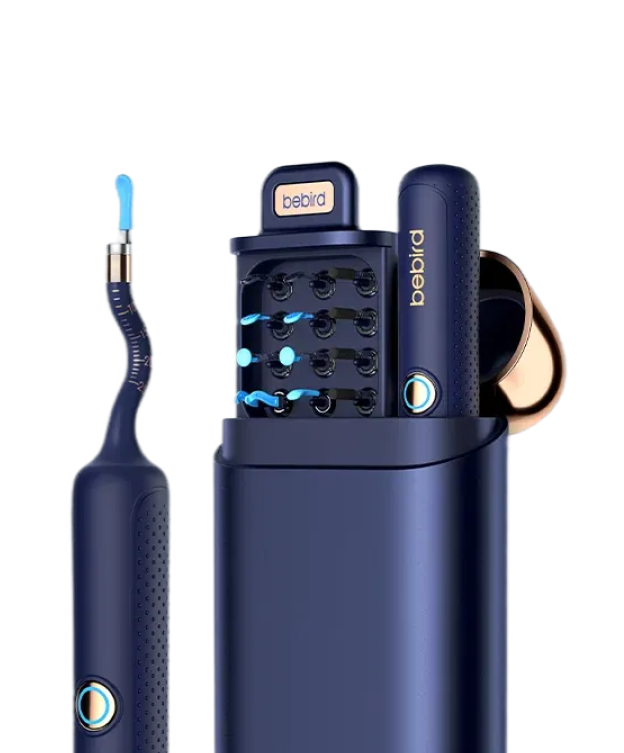Have you ever noticed that you can hear your heartbeat in your ear? This unsettling sensation is quite common and is known as pulsatile tinnitus. Unlike typical ringing or buzzing sounds associated with regular tinnitus, pulsatile tinnitus is rhythmic and often synchronized with your heartbeat. Many people wonder why I can hear my heartbeat in my ear. and whether it’s a cause for concern.
In this article, we will talk about pulsatile tinnitus and the conditions that might trigger it (including the presence of earwax), as well as the situations when an individual needs to visit a doctor. We can also tell you about safe ways to handle and minimize symptoms, and how you can do it through effective earwax removal instruments you may use in the comfort of your own home.
What Is Pulsatile Tinnitus?
Pulsatile tinnitus is a particular kind of tinnitus in which you hear the beat-like sounds that usually coincide with the pulse. This happens when there is a change or disturbance in the blood flow, which makes you feel these pulsations. Although the majority of tinnitus cases consist of constant ringing of the ears, pulsatile tinnitus can be distinguished by its pulsating sensation.
This state may be temporary or continuous and can be in either a single ear or both. Most cases of pulsatile tinnitus may be harmless, but in some instances, pulsatile tinnitus can indicate a medical condition, which is why it is essential to know some of the causes of the condition.

What Causes Pulsatile Tinnitus?
There are a number of reasons that can cause pulsatile tinnitus. The most popular reasons are:
Earwax Blockage
The easiest explanation of the beating of your heart in the ear is your blockage in earwax. An overabundance of earwax may cause a person to hear noises differently because audio signals can get trapped and mislead how you expect your ears to operate. This obstruction can increase the sound of internal organs, hence increasing the heartbeat.
In many cases, the symptoms may be relieved by safely removing earwax buildup when this is suspected of being the cause.
Blood Vessel Conditions
Severe conditions that influence the blood circulation, like high blood pressure, narrowing of arteries (atherosclerosis), or vascular tumors, may cause modification of the blood vessels around the area of the ears, and this may result in pulsatile tinnitus.
Middle Ear Problems
Problems with the middle ear, such as middle ear infections or abnormal bone growth, may be an issue because they can change the pressure or drainage of fluids, leading to a congested sound.
Other Causes
The other causes can be benign intracranial hypertension (increased pressure in the brain), anemia, or temporomandibular joint (TMJ) disorders.
When to Be Concerned about Pulsatile Tinnitus
Although pulsatile tinnitus, in most cases, is harmless, in some situations, it should send a signal that you need to see your doctor. Do not ignore medical attention when needed.
There is loudness or continued noise
When the pulsatile tinnitus comes along with issues in hearing, dizziness, or balance problems, you experience hearing loss, dizziness, or balance problems.
There is dullness or an earache.
You are an individual with a history of cardiovascular disease or symptoms of the neurological system.
Early detection can be used to rule out severe conditions and also to carry out the right kind of treatment.
How to Manage or Reduce the Symptoms
Treatment of pulsatile tinnitus can be a matter of treating the cause of it. Some of the practical tips are as follows:
Safe Earwax Removal
Earwax blockage may also be the reason why you can hear your heartbeat through the ear, and it is important to clear away the wax to alleviate the problem. Do not use cotton swabs, bobby pins, or other sharp objects, as they may cause the wax to go even deeper into the ear or even cut the sensitive skin and eardrum.
Modern technology provides safer and more effective types of it that enable you to properly clean your ears at home with precision and confidence. The following are the best ear cleaning tools recommendations

Bebird EarSight Plus
Bebird EarSight Plus ear wax removal tools are one of the outstanding devices that are designed with a small and high-definition camera at the tip. It allows you to observe the inside of your ear canal on the screen of your smartphone in real time and removes wax carefully. The visual direction makes it less likely that vision will be hurt and that it will be cleaned well. There is also a variety of soft silicone tips of varying sizes that are available in the device to fit the ear canals of different sizes, and this makes the device safe and comfortable to use regularly.
Ear Care Tool and Earwax Removal Kit
The Bebird Ear Care Tool and Earwax Removal Kit is a full set that also incorporates a set of precision tools designed to target the different shapes of wax and the different shapes of the ear. What it offers includes spiral picks and scoop tools, among other products, all of which are designed to cause as little irritation as possible, yet perform the necessary functions of removing stubborn wax. The kit is perfect for people who like to use classic tools and want them to be safer and more comfortable than they are by using improvised techniques.
Bebird EarSight R1 Portable Ear Cleaner
Bebird EarSight R1 Portable Ear Cleaner has been designed on similar lines but comes equipped with an incorporated camera, which makes it highly portable and wireless. It can easily be connected to your smartphone and displays clear images as you clean. Its ergonomic design makes it easy to carry around, whether in the house or street, hence your ears always remain clean, and in the meantime, it uses a rechargeable battery, making it economical to use.
The proper use of any of these tools can considerably mitigate the discomfort and pulsatile tinnitus that one experiences as a result of the accumulation of earwax. It is important to be neat and clean the tools after every use and remember to read the instructions properly.
Managing Other Causes
In cases where the pulsatile tinnitus is brought about by vascular or other medical conditions, your physician may prescribe medications or other therapies to control blood pressure, infections, or other underlying problems.
Lifestyle modifications like less caffeine and salt consumption, de-stressing measures, and keeping out of loud noise, etc, can also aid in relieving the symptoms.
Conclusion
So, Why Can I Hear My Heartbeat in My Ear? The solution is often in the pulsatile tinnitus, meaning that you hear a rhythmic throbbing sound that is connected with changes in the blood flow or with issues of the ears. One of the most common and curable reasons is the blockage of earwax that enhances sounds inside your body, such as those of the heart.
When this symptom is experienced regularly, it is wise to consider the safest mode of removal of earwax. Such accessories as Bebird EarSight Plus, Bebird Ear Care Tool, and Earwax Removal.
Related reading:
















Leave a comment
All comments are moderated before being published.
This site is protected by hCaptcha and the hCaptcha Privacy Policy and Terms of Service apply.